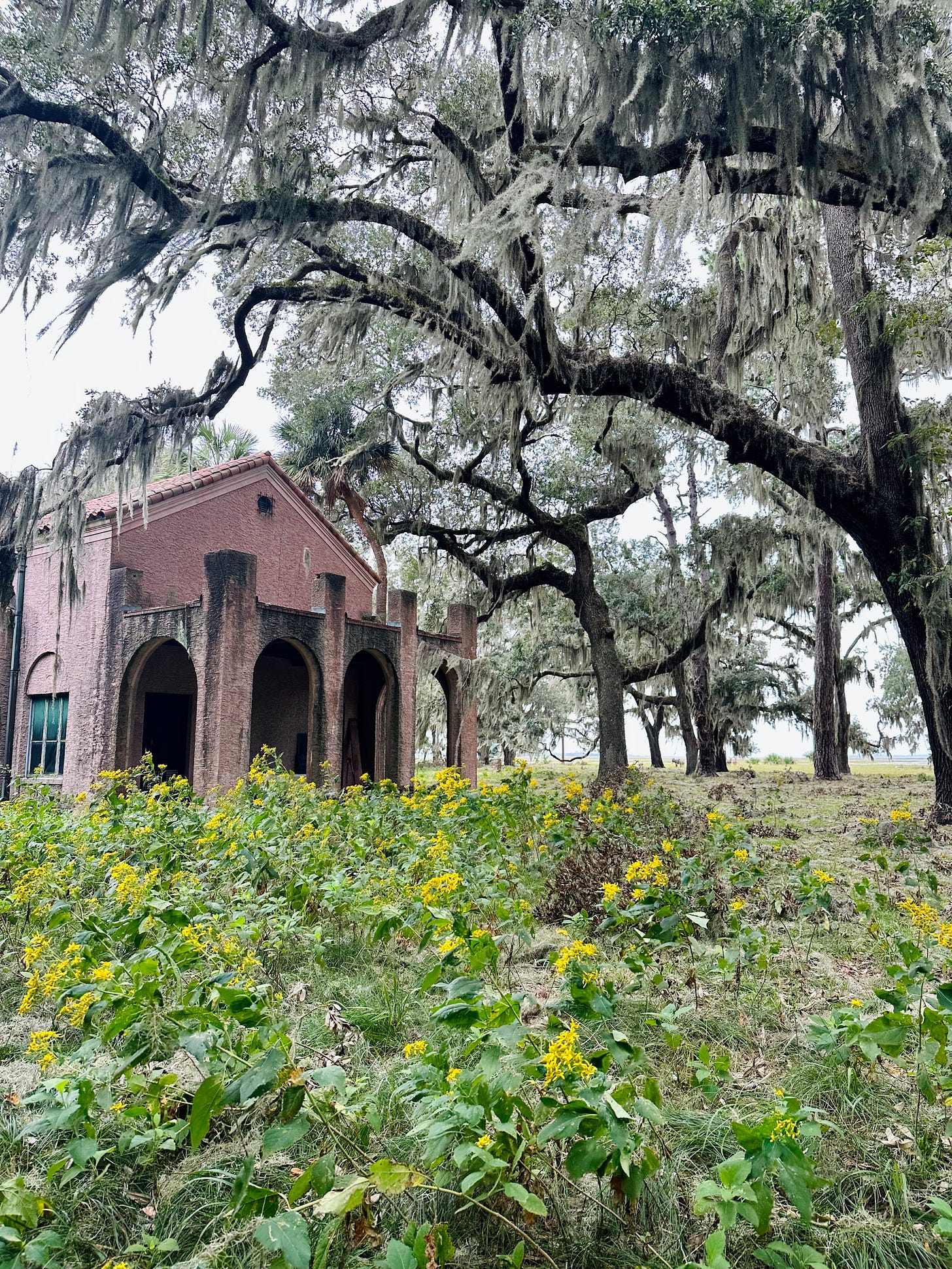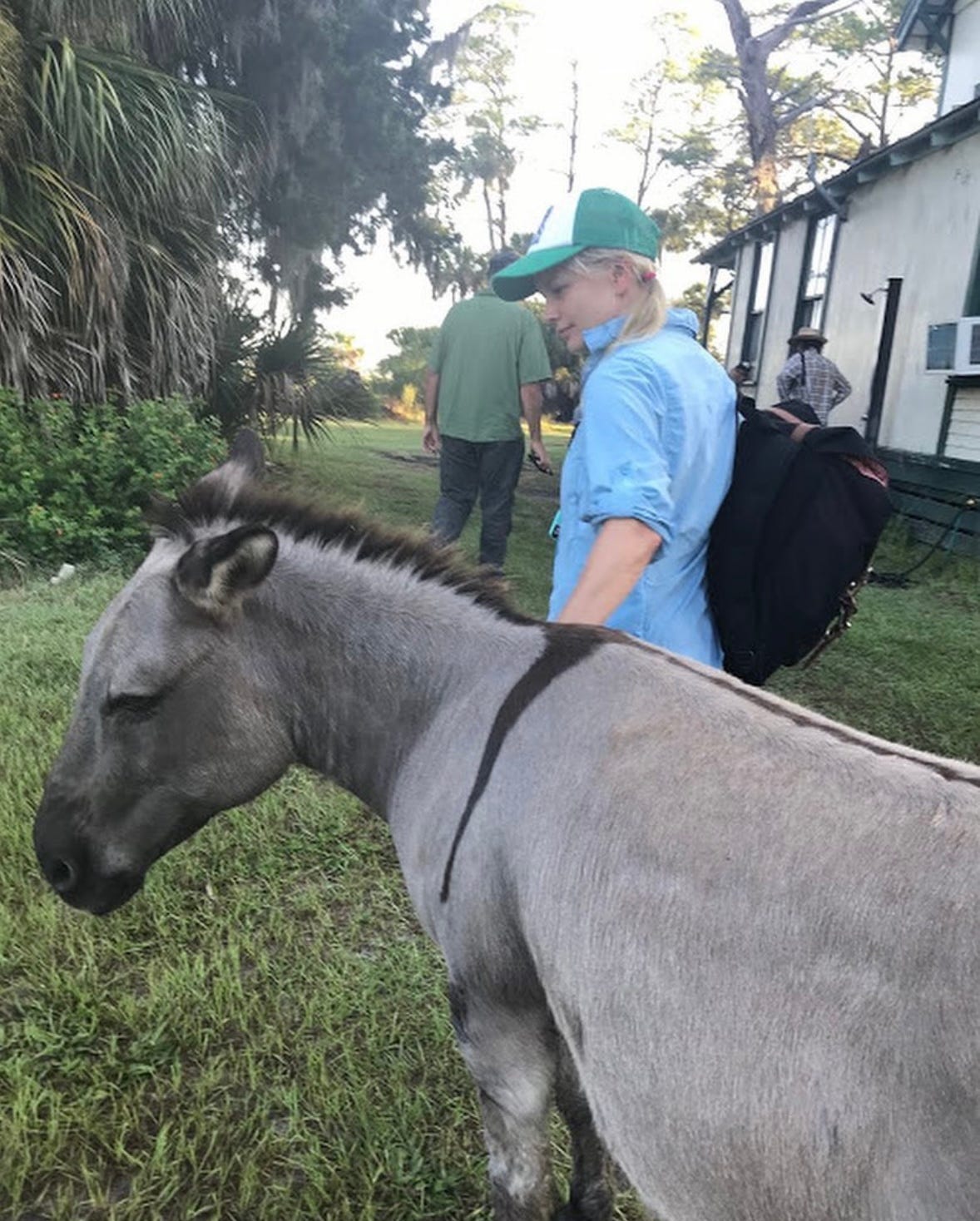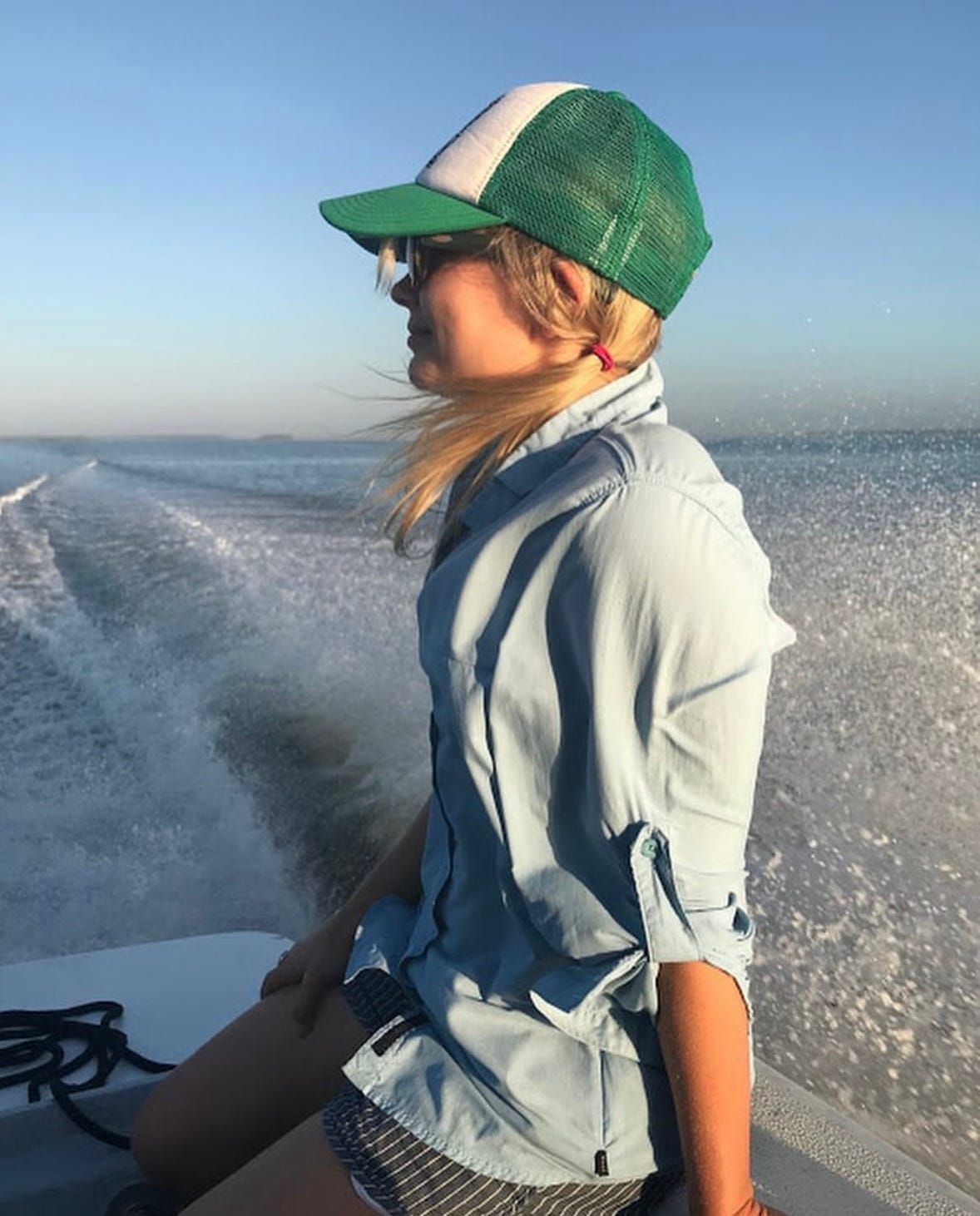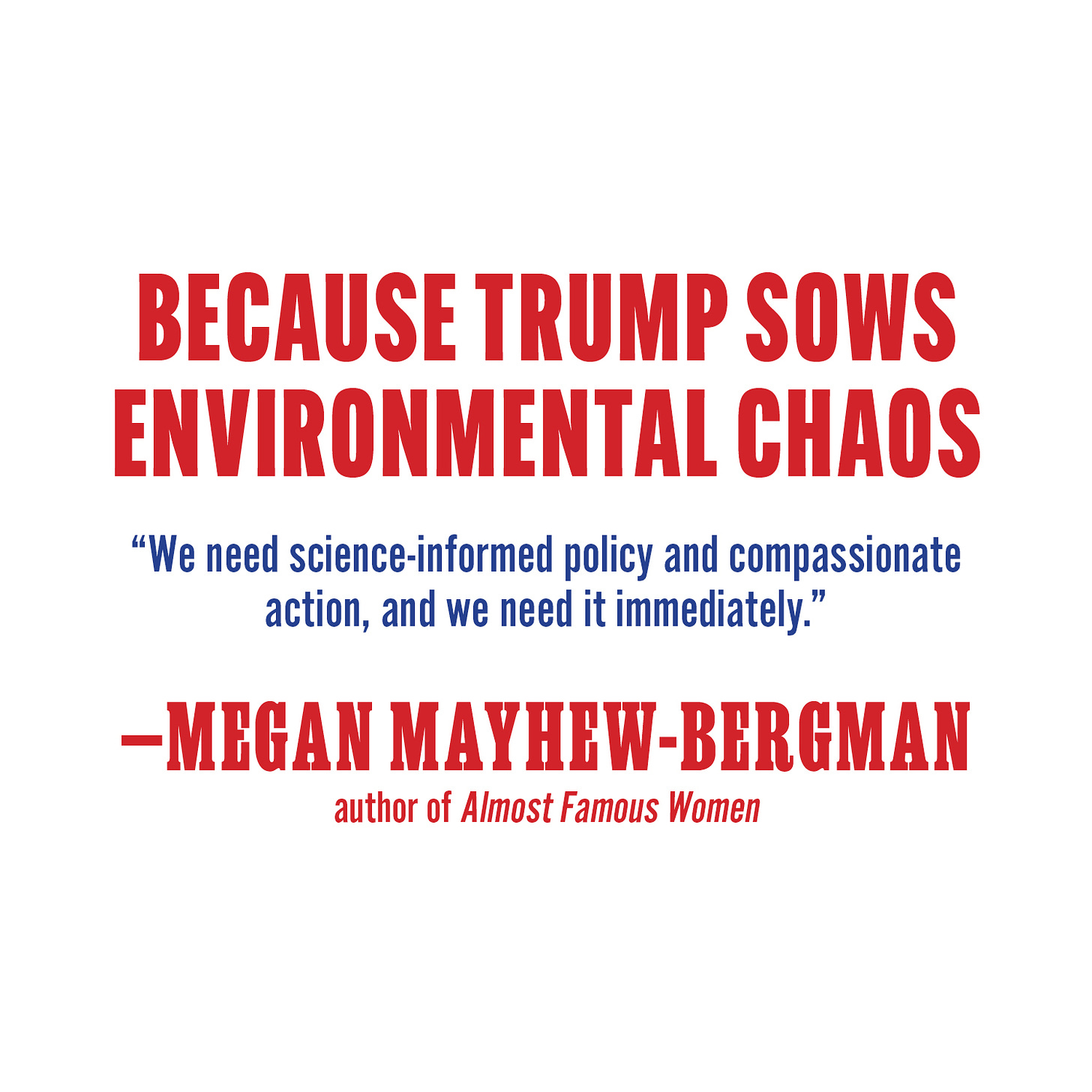I’ve been working on a documentary project on Ossabaw, a barrier island in Georgia.
For six years I’ve dreamed of making this film, ever since I stepped foot on the island in September 2018, as a guest of 100 Miles.
I’m drawn to unusual women, conservation, maritime forests, Jimmy Carter, old trees, witchcraft, sea turtles, risk-taking artists, bygone mansions, bohemian scientists, platonic intimacy, and community. Giving the women of the past more flowers, placing them back in the conversation. This story contains all of those ingredients, and I knew its best form was visual. Many people have told beautiful versions of Ossabaw’s story, and I hope to add my perspective to the conversation.
My videographer and I spent last weekend in Savannah interviewing incredible people in beautiful places. I’ve realized that my favorite place is out in the field, boots in the muck, learning, dreaming.
I told a friend that I am unapologetically oriented toward beauty, and I find it everywhere in this work, despite how crushing the larger climate picture can be. It’s such a privilege to meet interesting people and to listen and learn from them, and to try and craft a story so that other people will be able to carry those insights forward into their own lives.
*
While traveling south, I received messages from friends and relatives in my home state of North Carolina detailing the rapidfire misinformation circulating Instagram about the hurricane disaster response - alongside stories of missing friends, demolished businesses, flooded homes, broken water systems, women with young children stranded without food and formula, elders clinging to trees.
The power of storytelling during this hurricane season - a wild mix of oral, mythical, journalistic, factual, propaganda - is not lost on me. But it seems like the guardrails of critical thinking are truly off when college-educated people in your Instagram feed are sharing wild takes about the government orchestrating storms. The stories have gone gonzo in the worst way.
People are weary. Worn down by life and the constant storm of information, crises, a news cycle in search of clicks and shares. The wild stories which speak to partisan anger are poised to land harder.
This feels like quintessential storytelling in the era of the polycrisis, which my friend, writer Emily Raboteau, spoke so beautifully about at Middlebury last week as part of my Environmental Storytelling Series.
I believe you’ll hear more about the polycrisis, or compound crisis, in months and years to come. The terms represent the convergence of multiple crises - pandemics, climate change, storms, political violence, etc. It’s a term that speaks to this hydra-headed, relentless era.
In the era of the polycrisis, it feels too easy to lose the thread, the sane middleground that ignores political allegiance for basic concern about a person’s wellbeing in a storm. You have to duck to miss the pieces of airborne propaganda.
*
There’s a similar buzz in New England every time a hurricane brews in the Atlantic - why don’t those people move? Why don’t they evacuate? Little phrases which always make my blood boil: “down there” and “those people.”
I found myself thinking about my column for the Guardian on the American South and Climate Change. It astounds me that these articles are 5 years old, and it pains me to remember what I was feeling as I wrote them. I don’t speak for all climate journalists, but I know many of us write these pieces from an earnest, educated, heart-forward place.
You write hoping that you might contribute to a shift in thinking, that you might flip a light on for someone to get activated in the climate space, that you might save a person or a species or a landscape some modicum of suffering. But you also know you likely won’t.
Sometimes you break through, at least in terms of views. The most viral article I ever wrote - one of the Guardian’s Best of 2019 - warned of Florida’s looming real estate crisis. I wrote:
I spoke with a developer who wanted to remain anonymous, given business interests. He told me that he’s surprised that people are still buying, building and investing in coastal Florida. He estimated that a decade ago, only one in 10 buyers asked about the property elevation, or expressed concerns about rising seas. Today, nearly six of 10 ask and many decide not to buy in these same critical areas. “I’m worried we’re one bad storm away from a rush for the exits,” he told me.
During that series, I also wrote about the psychological resilience of people living in hurricane-prone areas:
I thought that I might observe more of a cultural tipping point, an urgency in places that need it most. But I found that many members of coastal communities have built up psychological resilience after living through years of extreme weather.
Avoidance and denial are proven coping mechanisms. And, frankly, most people are just trying to work and get through the day, and express concern for the future differently, from off-record conversations to outright advocacy. But continuing to reckon with a science-based reality – as painful and worry-inducing as it might be – is an important step toward informing meaningful, individual action.
Home is an emotional commitment. We’re an adaptable species, but also habitual and sentimental; that’s one reason we’re stuck in denial. It’s the reason change is going to hurt so much.
and:
I’ve long felt America, particularly the south, where I grew up, is in the “denial” stage of grief when it comes to our psychological response to climate change.
The sixth mass extinction has begun, our oceans are warming 40% faster than scientists anticipated, and the US’s carbon dioxide emissions rose 3.4% in 2018. How, I wonder, is everyone so calm? So business-as-usual?
Maybe the calm is wearing off.
*
Rebecca Solnit has written that every crisis is, in part, a storytelling crisis. She writes:
We are hemmed in by stories that prevent us from seeing, or believing in, or acting on the possibilities for change. Some are habits of mind, some are industry propaganda. Sometimes, the situation has changed but the stories haven’t, and people follow the old versions, like outdated maps, into dead ends.
Norwegian psychologist Per Espen Stoknes has said that climate change is probably the “largest science communication failure in history.”
I’ve always felt it’s unfair to hang that failure on the necks of scientists. The primary failure, in my eyes, will always be our unwillingness to listen to what matters, and to digest it. To truly listen, and to change our behavior in meaningful ways.
Solnit offers:
In order to do what the climate crisis demands of us, we have to find stories of a livable future, stories of popular power, stories that motivate people to do what it takes to make the world we need. Perhaps we also need to become better critics and listeners, more careful about what we take in and who’s telling it, and what we believe and repeat, because stories can give power – or they can take it away.
I hope, in my work, that I’m writing climate stories that are both realistic and inspiring. I hope I’m doing a fair and inspired job of telling.
*
Last weekend, off the coast of Savannah, I watched as a group of old friends worked together to rake wrack - dead spartina from the salt marsh - from the yard of an artist many of us adore. This is not the first time these friends will help one another after a storm, nor the last. In fact, as we prepared to leave Georgia, another hurricane was hurtling toward Florida and potentially south Georgia.
It was an honor to witness a community in action, the sandwiches in the cooler, the distribution of work gloves, the sound of raking and laughter in the rain.
Lifelines aren’t made in a day, local or otherwise. The depth and sincerity of relationships matter, and are the threads of the web of resilience.
Questions I’m sitting with: Where do you look when you need help? Moreover, whom are you helping?
xo
MMB
*
Additionally:
Thanks for liking and sharing this post and helping people find it.
If you are looking to be active in your climate work and personal philanthropy, I recommend World Central Kitchen, which is serving folks post-hurricane, and, if you’re looking to do something specific, supporting the rebuild of my friend William Boggess’s family farm. William is a great human from Western NC - deeply literary and considerate.
The Midd student paper interviewed me on my use of Substack. I said: “Substack is fast and allows a writer to be responsive and on the pulse a little more,” Mayhew-Bergman wrote. “At its worst, a lack of gatekeeping and fast publishing - both part of Substack’s promise - contributes to America’s opinion and misinformation culture. At its best, it allows a writer to be honest, present, and agile in a culture with a rapid-fire news cycle. The burden is on the writer to be solid with good intentions, and the reader to be discerning.”
I’m thrilled to be part of McSweeney’s 270 Reasons for Kamala. You can scroll and read my essay here.







